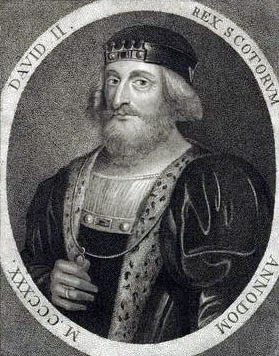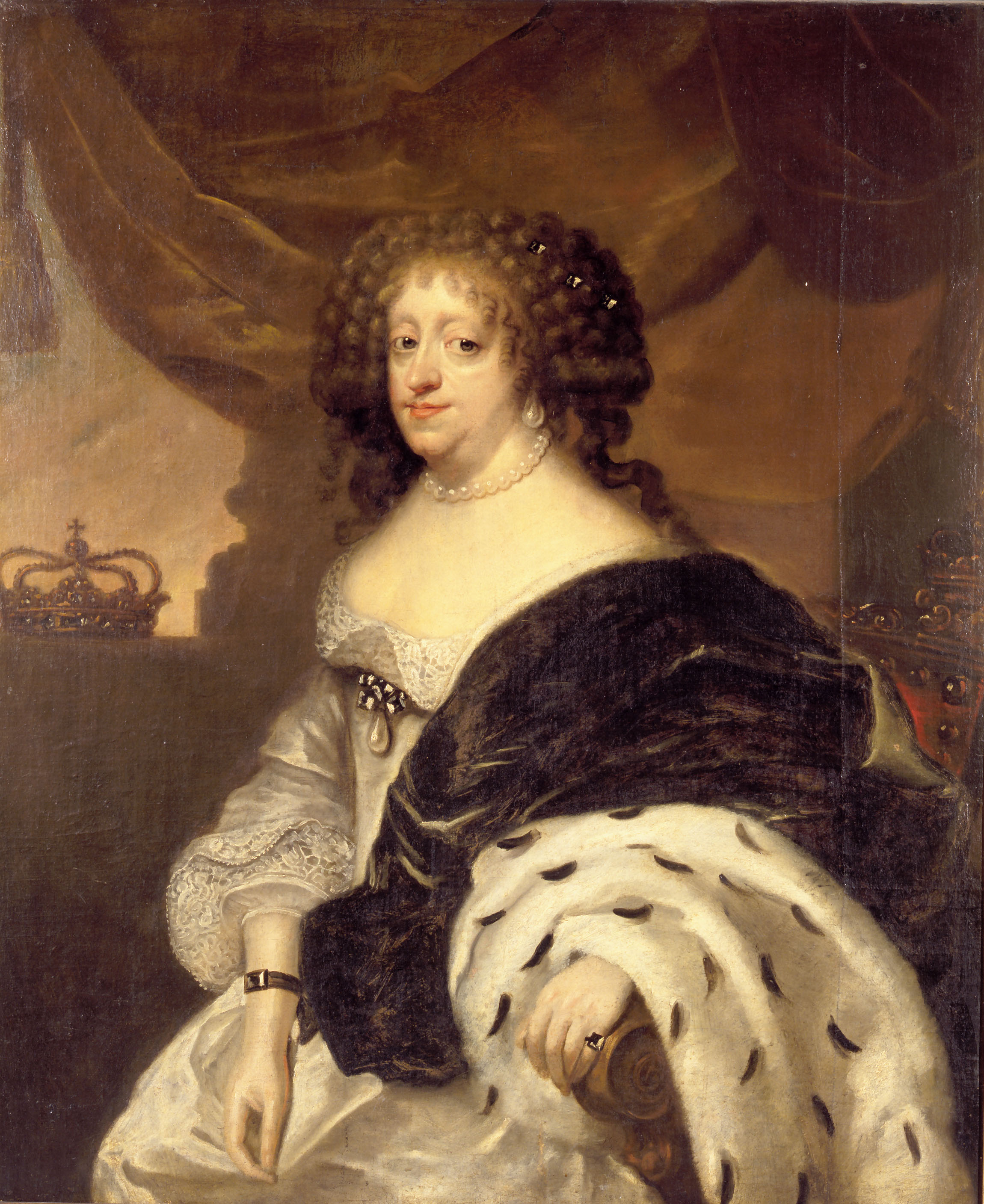© Unofficial Royalty 2025

Mary, Princess Royal and Henry Lascelles, Viscount Lascelles (later 6th Earl of Harewood); Credit – Wikipedia
February 28, 1155 – Birth of Henry the Young King, son of King Henry II of England and Eleanor of Aquitaine, at Bermondsey Abbey in London, England
Henry’s elder brother died in 1156 at the age of two, leaving Henry as the eldest child of King Henry II. In 1160, five-year-old Henry was married to two-year-old Marguerite of France, the daughter of King Louis VII of France (who happened to be the first husband of Eleanor of Aquitaine) and his second wife Constance of Castile. The reason for the early marriage was political. Marguerite’s dowry included the disputed territory of the Vexin and King Henry II wanted to possess it. Marguerite and Henry had one son, who survived for only three days. When Henry was 15, his father adopted the French practice of ensuring the succession by declaring his heir the junior king and he was crowned at Westminster Abbey. Despite his rank of junior king, King Henry II refused to grant Henry land or allow him to participate in the government. With his mother and his brothers Richard (the future King Richard I of England) and Geoffrey, he nearly overthrew King Henry II in 1173. In 1182–83, Henry had a falling out with his brother Richard when Richard refused to pay homage to him on the orders of King Henry II. As he was preparing to fight Richard, Henry became ill with dysentery (also called the bloody flux), the scourge of armies for centuries, and died at the age of 28.
Unofficial Royalty: Henry the Young King
February 28, 1648 – Death of King Christian IV of Denmark and Norway at Rosenborg Castle in Copenhagen, Denmark; buried at Roskilde Cathedral in Roskilde, Denmark
Having reigned for 59 years, Christian IV, King of Denmark and Norway is the longest-reigning monarch of Denmark and one of the most beloved. In 1588, Christian IV succeeded to the throne at the age of eleven. He married Anna Katharina of Brandenburg in 1597 and the couple had six children. Christian had affairs and illegitimate children. After his wife’s death, he married 18-year-old Kirsten Munk, from a wealthy, untitled noble Danish family in 1615. Kirsten was not the Queen due to the morganatic marriage and was given the title Countess of Schleswig-Holstein. Their ten children married into the Danish nobility, were styled Count and Countess of Schleswig-Holstein, and did not have succession rights. Christian IV and Kirsten’s stormy marriage ended in divorce in 1630, amid mutual allegations of infidelity and much bitterness. During his long reign, Christian IV, repeatedly and unsuccessfully attempted by military means to make the Kingdom of Denmark and Norway into a great power, especially during the Thirty Years War. However, his legacy would be his building projects and his cipher C 4 can be seen on many buildings in Denmark. Sensing he did not have a long time to live, Christian IV requested to be brought to his beloved Copenhagen. On February 21, 1648, he was carried in a litter from Frederiksborg Palace to Copenhagen. He died a week later, on February 28, 1648, at Rosenborg Castle, at the age of 70.
Unofficial Royalty: King Christian IV of Denmark and Norway
February 28, 1690 – Birth of Alexei Petrovich, Tsarevich of Russia, son of Peter I (the Great), Emperor of All Russia and his first wife Eudoxia Feodorovna Lopukhina, at Preobrazhensky, Russia
Alexei Petrovich, Tsarevich of Russia, heir to the Russian throne, was the elder of the two sons of Peter I (the Great), Emperor of All Russia and his first wife Eudoxia Feodorovna Lopukhina. In 1711, 21-year-old Alexei married 17-year-old Charlotte Christine of Brunswick-Lüneburg. Alexei and Charlotte Christine had two children, Grand Duchess Natalia Alexeievna who died of tuberculosis at age 14, and Peter II, Emperor of All Russia who died of smallpox at age 14. Three days after giving birth to her son Peter, 21-year-old Charlotte Christine died from puerperal fever (childbed fever). In 1718, Alexei confessed to being involved in a plot to overthrow his father and implicated most of his friends. He was tried, convicted, and sentenced to be executed. The sentence could be carried out only with Peter the Great’s signed authorization, but Peter hesitated in making the decision. 28-year-old Alexei died at the Fortress of St. Peter and Paul in St. Petersburg. His death most likely resulted from injuries suffered during his torture.
Unofficial Royalty: Alexei Petrovich, Tsarevich of Russia
February 28, 1823 – Birth of Friedrich Franz II, Grand Duke of Mecklenburg-Schwerin at Ludwigslust Palace in Ludwigslust, Grand Duchy of Mecklenburg-Schwerin, now in Mecklenburg-Vorpommern, Germany
At the age of 21, Friedrich Franz succeeded his father Paul Friedrich as Grand Duke of Mecklenburg-Schwerin. He married three times: to Princess Auguste of Reuss-Köstritz (six children), Princess Anna of Hesse and by Rhine (one daughter), and Princess Marie of Schwarzburg-Rudolstadt (four children including Heinrich of Mecklenburg-Schwerin who married Queen Wilhelmina of the Netherlands). During his reign, which lasted over 40 years, Friedrich Franz II oversaw numerous reforms in the Grand Duchy, including improving the national hospital system, reforming the judicial system and the state church. Against the interests of his relatives in neighboring Mecklenburg-Strelitz, he issued a liberal constitution in 1849. While the constitution was repealed the following year, his efforts made him immensely popular amongst his people. Friedrich Franz II died in 1883 at the age of 61.
Unofficial Royalty: Friedrich Franz II, Grand Duke of Mecklenburg-Schwerin
February 28, 1912 – Birth of Prince Bertil of Sweden, Duke of Halland, son of King Gustaf VI Adolf of Sweden, at the Royal Palace in Stockholm, Sweden
Full name: Bertil Gustaf Oskar Carl Eugén
Bertil was the son of King Gustav VI Adolf of Sweden and his first wife Margaret of Connaught, a granddaughter of Queen Victoria, who died before her husband became King of Sweden. Bertil served as an active naval officer. While serving as a naval attaché at the Swedish Embassy in London, Bertil met Welsh-born Lilian Craig (born May Lillian Davies) who was married to Scottish actor Ivan Craig. Bertil and Lilian soon became a couple, but their relationship remained a secret from the public for a long time. Craig was serving in World War II and when he returned home in 1945, the couple had an amicable divorce. At that time Bertil was third in the line of succession to the Swedish throne. By the time his father came to the throne in 1950, Bertil was now second in the line of succession. His elder brother Gustaf Adolf had been killed in a plane crash in 1947, leaving an infant son, Carl Gustaf, the future King Carl XVI Gustaf of Sweden, the heir to the throne. With the likelihood of Bertil being called to serve as Regent for his young nephew, he and Lilian chose not to marry so that he could retain his position in the Royal Family. Bertil’s father died in 1973, and Bertil’s nephew became King Carl XVI Gustaf. The rules, as well as the times, were beginning to change. In 1976, King Carl Gustaf married a commoner, Sylvia Sommerlath, and soon after, he granted his formal permission for Bertil and Lilian to marry. The couple married on December 7, 1976, at the Drottningholm Palace Chapel in the presence of the king and the queen. Bertil and Lilian had no children. Prince Bertil, aged 84, died after several years of declining health. Princess Lilian survived her husband for sixteen years, dying in 2013, at the age of 97.
Unofficial Royalty: Prince Bertil, Duke of Halland
February 28, 1922 – Wedding of Mary, Princess Royal, daughter of King George V of the United Kingdom, and Henry Lascelles, Viscount Lascelles (later 6th Earl of Harewood) at Westminster Abbey in London, England
Mary’s eldest brother, The Prince of Wales (the future King Edward VIII), knew Henry from World War I and greatly admired him. After meeting at the Grand National, an annual horse race, and a house party in 1921, Mary and Henry were continuously seen together, despite their fifteen-year age difference. They both loved horse riding and frequently attended hunts together. When Henry was invited to Balmoral and Sandringham, it was noted that there could be an engagement announcement soon. On November 20, 1921, Henry proposed to Mary at York Cottage, where he was staying while at Sandringham. The wedding of Princess Mary and Viscount Lascelles was the first time a child of a monarch had married at Westminster Abbey since 1290 when Margaret of England, daughter of King Edward I, married John II, Duke of Brabant.
Unofficial Royalty: Wedding of Mary, Princess Royal and Henry Lascelles, 6th Earl of Harewood
February 28, 1941 – Death of King Alfonso XIII of Spain in exile at the Grand Hotel in Rome, Italy; buried first at the Church of Santa Maria di Monserrato in Rome, Italy; reburied in 1980 at the Monastery of San Lorenzo El Escorial in El Escorial, Spain
Alfonso is noteworthy because he became the King of Spain at birth. His father died while his mother was pregnant. In 1906, Alfonso married Princess Victoria Eugenie of Battenberg (Ena), the daughter of Princess Beatrice, Queen Victoria’s youngest child. He had decided to marry Ena despite the risk that she was a hemophilia carrier. Ena’s brother Leopold suffered from the disease. Alfonso and Ena’s marriage was strained from the birth of their first son Alfonso. Shortly after his birth, it was discovered that he was suffering from hemophilia. Of their children, only their oldest and youngest sons had the disease. Despite knowing the possible risk before they married, Alfonso blamed Ena for bringing the disease into the royal family and distanced himself from her. He had several mistresses and fathered at least 6 illegitimate children. In 1931, elections were held, resulting in the establishment of the Second Spanish Republic. Alfonso and his family fled Spain, settling in France and then Italy. Soon after going into exile, Alfonso and Ena went their separate ways. He remained in Rome, while Ena settled in Switzerland. On January 15, 1941, feeling that his life was coming to an end, Alfonso formally abdicated in favor of his third son Juan, Count of Barcelona (the father of the future King Juan Carlos I of Spain). His two older sons had both renounced their claims to the throne in the early 1930s. Just weeks later, on February 28, 1941, King Alfonso XIII died at the Grand Hotel in Rome, Italy at the age of 54.
Unofficial Royalty: King Alfonso XIII of Spain
February 28, 1991 – Death of Prince Wenzel of Liechtenstein, son of Prince Franz Joseph II, brother of Prince Hans-Adam II, in Vaduz, Liechtenstein; buried in the Princely Crypt at St. Florian Cathedral in Vaduz, Liechtenstein
The brother of Hans-Adam II, the current Prince of Liechtenstein, Wenzel was the youngest of the five children of Franz Josef II, Prince of Liechtenstein. He studied to become a doctor and worked in a hospital as an intern. On February 28, 1991, Wenzel, aged 28, died under unclear circumstances. The Princely Family of Liechtenstein kept silent and remains silent about the cause of death.
Unofficial Royalty: Prince Wenzel of Liechtenstein
This article is the intellectual property of Unofficial Royalty and is NOT TO BE COPIED, EDITED, OR POSTED IN ANY FORM ON ANOTHER WEBSITE under any circumstances. It is permissible to use a link that directs to Unofficial Royalty.









